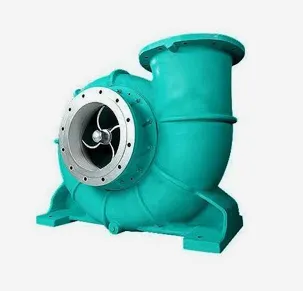Punjabi
- Afrikaans
- Albanian
- Amharic
- Arabic
- Armenian
- Azerbaijani
- Basque
- Belarusian
- Bengali
- Bosnian
- Bulgarian
- Catalan
- Cebuano
- Corsican
- Croatian
- Czech
- Danish
- Dutch
- English
- Esperanto
- Estonian
- Finnish
- French
- Frisian
- Galician
- Georgian
- German
- Greek
- Gujarati
- Haitian Creole
- hausa
- hawaiian
- Hebrew
- Hindi
- Miao
- Hungarian
- Icelandic
- igbo
- Indonesian
- irish
- Italian
- Japanese
- Javanese
- Kannada
- kazakh
- Khmer
- Rwandese
- Korean
- Kurdish
- Kyrgyz
- Lao
- Latin
- Latvian
- Lithuanian
- Luxembourgish
- Macedonian
- Malgashi
- Malay
- Malayalam
- Maltese
- Maori
- Marathi
- Mongolian
- Myanmar
- Nepali
- Norwegian
- Norwegian
- Occitan
- Pashto
- Persian
- Polish
- Portuguese
- Punjabi
- Romanian
- Russian
- Samoan
- Scottish Gaelic
- Serbian
- Sesotho
- Shona
- Sindhi
- Sinhala
- Slovak
- Slovenian
- Somali
- Spanish
- Sundanese
- Swahili
- Swedish
- Tagalog
- Tajik
- Tamil
- Tatar
- Telugu
- Thai
- Turkish
- Turkmen
- Ukrainian
- Urdu
- Uighur
- Uzbek
- Vietnamese
- Welsh
- Bantu
- Yiddish
- Yoruba
- Zulu
Telephone: +86 13120555503
Email: frank@cypump.com
ਨਵੰ. . 08, 2024 03:26 Back to list
Calculating Power Requirements for Slurry Pump Efficiency and Performance Optimization
Slurry Pump Power Calculation A Comprehensive Guide
Slurry pumps play a crucial role in various industries where the transport of a mixture of solids and liquids is essential. Understanding how to calculate the power required for a slurry pump is vital for optimizing performance, ensuring efficiency, and minimizing operational costs. This article provides a detailed exploration of slurry pump power calculation, highlighting key considerations and methodologies involved.
Understanding Slurry Pumps
Slurry pumps are designed to handle a mixture of solids suspended in liquids, commonly found in mining, construction, and wastewater treatment applications. These pumps need to be robust and capable of managing abrasive materials without compromising performance. The efficiency of a slurry pump can significantly affect the overall process, making accurate power calculations critical.
The Basics of Power Calculation
The power required to drive a slurry pump can be estimated using several factors, including the flow rate, the density of the slurry, the head requirement, and the efficiency of the pump. The basic formula for calculating the hydraulic power \( P_h \) needed is
\[ P_h = \frac{Q \cdot H \cdot \rho \cdot g}{\eta} \]
Where - \( P_h \) = Hydraulic power (Watts) - \( Q \) = Flow rate (m³/s) - \( H \) = Total head (meters) - \( \rho \) = Density of the slurry (kg/m³) - \( g \) = Gravitational acceleration (approximately 9.81 m/s²) - \( \eta \) = Pump efficiency (as a decimal)
Key Parameters in Power Calculation
1. Flow Rate (Q) This is the volume of slurry that needs to be pumped per unit time. It is essential to know the operational requirements of the system to determine the appropriate flow rate.
2. Total Head (H) This refers to the height the slurry needs to be lifted or the pressure required to overcome friction losses in the piping system. Calculating the total head involves considering vertical lift, friction losses, and any necessary pressure requirements.
3. Slurry Density (ρ) The density of the slurry is typically greater than that of water due to the suspended solids. Accurate density measurement is crucial, as it directly impacts the hydraulic power calculation.
slurry pump power calculation

4. Pump Efficiency (η) Not all the supplied power is converted into hydraulic power; some energy is lost due to mechanical inefficiencies. Pump manufacturers usually provide efficiency ratings based on various operational conditions.
Example Calculation
Suppose we have a slurry pump operating at a flow rate of 100 m³/h (which converts to approximately 0.0278 m³/s), with a total head of 20 meters, a slurry density of 1,200 kg/m³, and a pump efficiency of 70% (or 0.7).
First, convert the flow rate
\[ Q = \frac{100}{3600} \approx 0.0278 \, m³/s \]
Now, plug the values into the power formula
\[ P_h = \frac{0.0278 \, m³/s \cdot 20 \, m \cdot 1200 \, kg/m³ \cdot 9.81 \, m/s²}{0.7} \]
Calculating this yields
\[ P_h \approx 7,600 \, Watts \, (or \, 7.6 \, kW) \]
Conclusion
Accurate power calculation for slurry pumps is a fundamental aspect that influences their operational efficiency and effectiveness. By understanding the parameters involved, operators can make more informed decisions regarding pump selection, sizing, and system design, ultimately leading to enhanced performance and reduced costs. A thorough grasp of these calculations not only contributes to operational success but also improves the sustainability of industrial processes involving slurry handling.
-
Horizontal Split Case Pump with GPT-4 Turbo | High Efficiency
NewsAug.01,2025
-
ISG Series Pipeline Pump - Chi Yuan Pumps | High Efficiency, Durable Design
NewsAug.01,2025
-
Advanced Flue Gas Desulfurization Pump with GPT-4 Turbo | Durable & Efficient
NewsJul.31,2025
-
ISG Series Vertical Pipeline Pump - Chi Yuan Pumps | Advanced Hydraulic Design&Durable Construction
NewsJul.31,2025
-
ISG Series Vertical Pipeline Pump - Chi Yuan Pumps | Energy Efficient & Low Noise
NewsJul.31,2025
-
pipeline pump - Chi Yuan Pumps Co., LTD.|High Efficiency&Low Noise
NewsJul.31,2025










